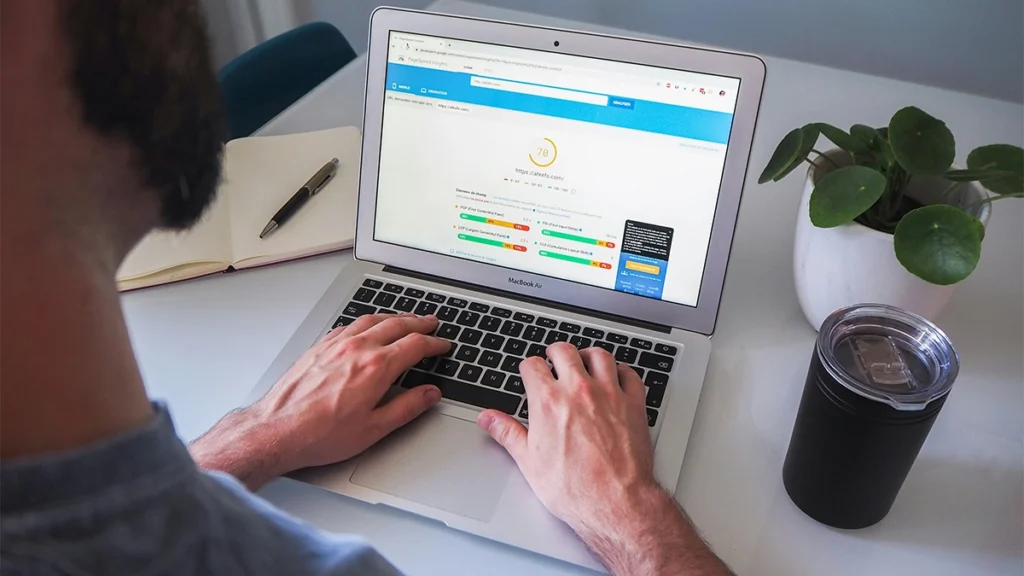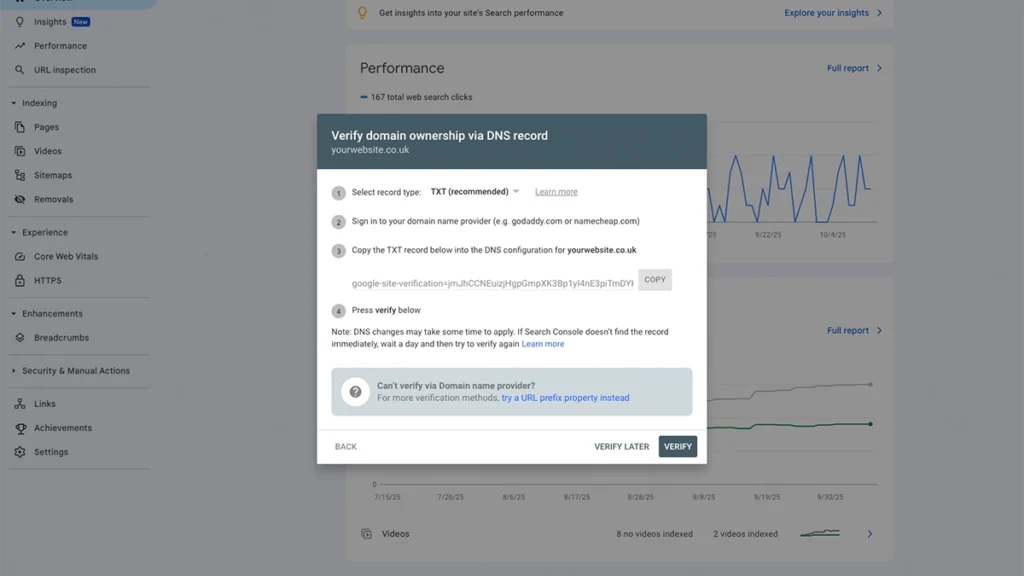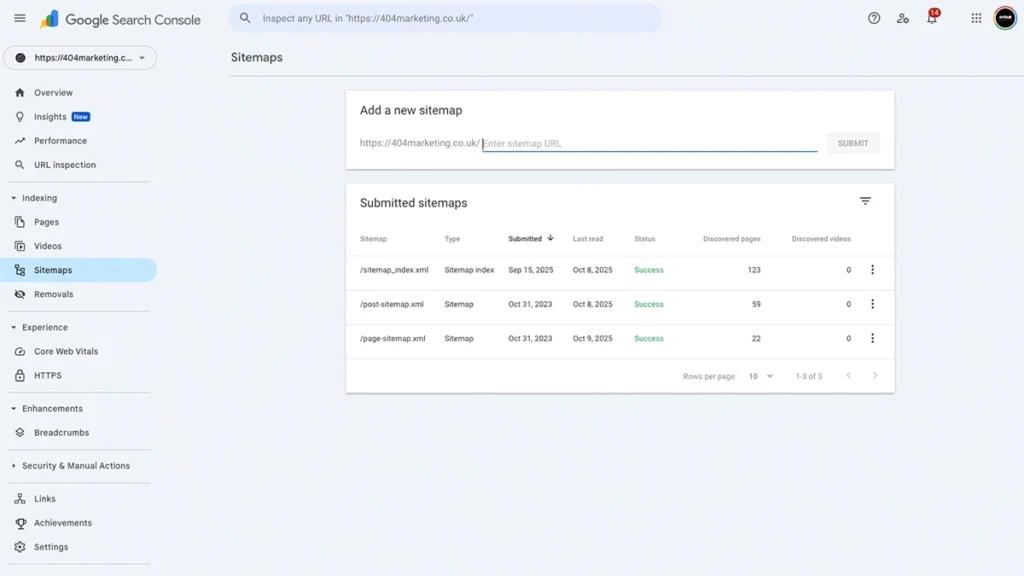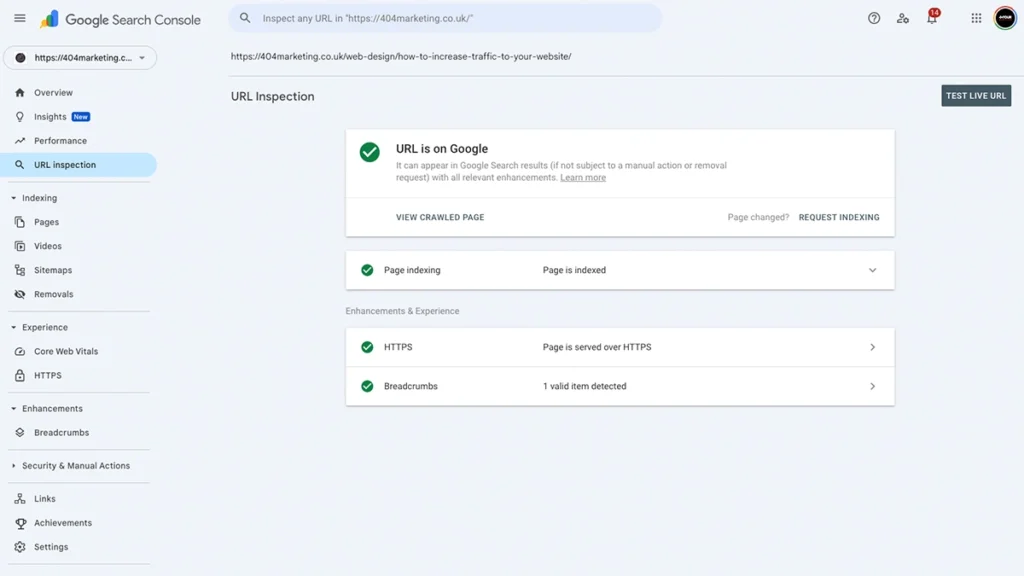If you’ve launched a website but it’s sitting quiet with only a few visitors trickling in, you’re not alone. Many small businesses face the same challenge – building a great website is only half the battle. The real work is learning how to increase traffic to your website and get people to actually find it.
In this guide, we’ll show you how to increase traffic to your website using proven, practical strategies that work in 2025. From SEO fundamentals to content creation, social media, and smart email marketing, you’ll discover realistic ways to attract the right audience – without needing a huge budget or marketing team.
Quick Answer:
To increase traffic to your website in 2025, focus on creating quality content, optimising for SEO, using social media strategically, and analysing your results. Consistency is key.
1. Optimise Your Website for Search Engines (SEO)
SEO is one of the most effective ways to increase traffic to your website, helping search engines understand your pages and users find you faster.
Great content only drives traffic if people can find it. SEO is how you make your pages easy for Google to understand and enjoyable for humans to read. Below is a cleaner, more structured version of your section with concrete actions you can paste straight in.
What SEO actually means (in plain English)
SEO is about matching what people search for with clear, well-structured pages. Do three things well and you’re ahead of most competitors:
- Target a single search intent per page,
- Make that intent obvious in your titles, headings and copy,
- Ensure your site is fast, mobile-friendly and crawlable.
read more
Is SEO Dead? An In-Depth Analysis
On-Page SEO: The Essentials
Here’s a quick breakdown of what makes content SEO-friendly:
1. Do Keyword Research
Start by understanding what your audience is actually searching for. Use tools like Google Keyword Planner, Ahrefs, or SEMrush to find relevant phrases with decent search volume and low competition.
Choose one main keyword – for example, how to increase traffic to your website – and use natural variations throughout your content such as grow website visitors or boost web traffic.
2. Structure Your Content Clearly
Make it easy to read and scan. Use short paragraphs, bullet points, and clear headings (H2s and H3s) to guide the reader through each section.
A clear structure helps people find what they need faster – and it helps Google understand your content hierarchy.
3. Prioritise Quality Over Quantity
It’s better to publish one great article than five forgettable ones. Aim to cover topics thoroughly, using examples, visuals, or short case studies to add value. High-quality content naturally attracts links and performs better over time.
4. Keep Readers Engaged
Search engines notice when people stick around. Add images, examples, and internal links to keep visitors exploring. End sections with small calls to action – like asking a question or suggesting a related post.
5. Refresh and Repurpose
Good content ages well, but it still needs attention. Review your articles every six to twelve months – update stats, improve readability, and check for broken links.
If a post performs well, repurpose it into different formats like infographics, short videos, or carousel posts to reach a wider audience.
Technical Quick Wins
Before moving on, check these simple SEO foundations:
- Page Speed:
Use tools like Google PageSpeed Insights to test your site and fix anything slowing it down. - Mobile Optimisation:
Make sure your website looks and works perfectly on mobile. - Meta Tags:
Write clear, keyword-rich titles and meta descriptions for every page. - Alt Text:
Describe each image so search engines (and screen readers) understand them. - Internal Links:
Add links to related pages to help users (and Google) explore your content.
If you follow these basics, you’ll be off to a strong start – and every piece of content you publish will have a better chance of ranking well in search.
Not sure if your website is SEO ready?
Get a free website audit
2. Create High-Quality, Consistent Content
Publishing valuable, relevant content on a regular basis is one of the easiest ways to increase traffic to your website naturally.
When it comes to driving traffic, consistency beats intensity. Publishing valuable, relevant content on a regular basis builds trust with your audience and gives search engines a reason to keep coming back.
But consistency doesn’t mean posting every day. What matters is finding a schedule you can realistically maintain – whether that’s once a week, twice a month, or even monthly – and sticking to it.
Plan Ahead with a Content Calendar
A content calendar helps you stay organised and ensures you never run out of ideas.
Use a simple spreadsheet or project management tool to plan what you’ll publish, when it’s going live, and which platforms you’ll share it on.
Include key dates, seasonal trends, and topics that matter to your audience – for example, local events, product launches, or industry news.
Pro tip: Link your calendar to Google Search Console data to spot which keywords or topics deserve follow-up posts.
Mix Up Your Content Formats
Different people consume content in different ways. By using a mix of formats, you can reach a wider audience and make your brand feel more engaging.
Consider including:
- Blog posts and guides – perfect for SEO and storytelling.
- Videos and short clips – ideal for social media and tutorials.
- Infographics – great for sharing stats or quick tips visually.
- Podcasts or interviews – build authority and connect with listeners on the go.
When possible, link your formats together – for instance, turn a blog post into a short video or carousel post for social media.
Maintain a Consistent Voice and Style
Every piece of content should sound like it comes from the same brand.
Create editorial guidelines that define your tone, writing style, image use, and preferred vocabulary. At 404 Marketing, we always recommend a voice that’s clear, helpful, and down-to-earth – professional, but never corporate or cold.
Consistency builds recognition: when people can identify your tone, they begin to trust your brand.
Repurpose and Refresh Evergreen Content
Not every post needs to start from scratch. Some of your best-performing content can be updated or reimagined in new ways. Turn a popular blog post into a video walkthrough, design an infographic around key stats, or break a long article into a series of bite-sized social posts.
Set time aside every few months to review your top pages in Google Analytics or Search Console. If they’re still getting traffic, update them with fresh examples, visuals, or insights to keep them relevant.
Keep Your Audience in Mind
Quality content isn’t just about publishing regularly – it’s about solving real problems for your audience.
Before writing anything, ask:
- What does my customer want to learn?
- How can I make this easy to understand?
- What’s the next step I want them to take after reading?
When you consistently create helpful, audience-focused content, you’ll build long-term authority, keep readers coming back, and strengthen every other part of your marketing strategy.
3. Optimise Your Website for Speed and Mobile

A fast-loading and mobile-responsive website is essential for both user experience and search engine rankings. Make sure that your website is running as best as possible, as potential customers aren’t going to wait around for a slow website to load.
You can use a free tool called PageSpeed Insights to get a report on your website’s speed performance and how to improve it.
Keep Your Website Fast
The most common issue is large image files! This is easy to avoid if you consider that most users will be on a mobile device, so the image will be displayed on a small scale. Why not upload it at that same small scale, to begin with?
Consider using newer, smaller format files like WebP rather than JPEG files.
Aside from images, keep things lean:
- Remove unnecessary plugins and scripts.
- Enable browser caching so repeat visitors don’t need to reload everything.
- Minimise CSS and JavaScript files to reduce page weight.
- If your site still feels sluggish, consider using a Content Delivery Network (CDN) to deliver files faster, no matter where users are.
If you’re unsure how to make these changes, your web developer or hosting provider can help. It’s a worthwhile investment – faster websites convert better and rank higher.
Make it Mobile-Friendly
With more than half of all web traffic now coming from mobile devices, a responsive design isn’t optional – it’s essential. Your website should automatically adjust to fit different screen sizes and orientations without breaking layouts or cutting off text.
Here’s what to check:
- Buttons and menus should be easy to tap.
- Text should be large enough to read without zooming.
- Images and videos should resize smoothly on smaller screens.
- Avoid pop-ups that are difficult to close on mobile.
You can test your site’s mobile usability using Google’s Mobile-Friendly Test, which will flag any issues to fix.
By keeping your site fast, light, and mobile-responsive, you’ll improve the user experience and send all the right signals to search engines. A smooth site not only helps people stay longer but also makes them more likely to come back – which is exactly what Google looks for when deciding which sites deserve more traffic.
4. Make sure Google Knows You’re There
You can have the best website in the world, but if Google doesn’t know it exists, nobody’s going to find it. That’s why it’s essential to tell search engines where your site lives and how it’s structured.
The easiest way to do this is through Google Search Console – a free tool that helps you monitor and maintain your site’s presence in Google Search results. It might sound technical, but once you’re set up, it’s simple to use and incredibly valuable for understanding how your website performs.
Step 1: Set Up Google Search Console

If you haven’t done this yet, start by verifying ownership of your website.
Google will ask you to confirm that you’re the site owner – usually by adding a small snippet of code to your site or connecting through your domain provider. Once verified, Search Console begins collecting data about how your pages appear in search results.
Tip: If your site is built in WordPress, plugins like Yoast SEO or Rank Math can connect directly to Google Search Console and automatically generate your sitemap for you.
Step 2: Submit Your Sitemap

Your sitemap is a simple file (usually found at yourwebsite.co.uk/sitemap.xml) that lists all the important pages on your website.
Submitting it to Google helps search engines crawl your site more efficiently and ensures that new or updated pages are discovered quickly.
To submit your sitemap:
- In Search Console, go to Indexing › Sitemaps.
- Enter your sitemap URL (for example, https://yourwebsite.co.uk/sitemap.xml).
- Click Submit.
You only need to do this once – Google will revisit your sitemap automatically as you add or edit content.
Step 3: Request Indexing for New or Updated Pages

When you publish a new page or make significant updates, you can ask Google to crawl it sooner.
Simply paste your page URL into the URL Inspection bar in Search Console and click Request Indexing.
This prompts Google to re-scan that specific page instead of waiting for its next scheduled crawl.
Pro tip: Use this feature when you add a new blog post, product, or service page. It can help your content appear in search results faster.
5. Promote Your Content on Social Media

Social media remains one of the most direct ways to increase traffic to your website and connect with new audiences.
Like it or not, social media has become one of the most powerful tools for growing a business, and it plays a major role in driving traffic to your website. It’s where your audience spends time, discovers new brands, and decides who to trust.
If used well, social platforms can be your biggest source of referral traffic, helping you connect with people who might never find you through search alone.
Focus on the Right Platforms
You don’t need to be active everywhere – you just need to be active where your audience is.
- Instagram and TikTok are perfect for visual storytelling and lifestyle brands.
- LinkedIn is ideal for B2B and professional services.
- Facebook works well for community-based engagement.
- Pinterest can drive long-term website traffic through evergreen, searchable pins.
Start by focusing on one or two platforms and build from there. Quality and consistency matter more than trying to be everywhere at once.
Share Valuable, Engaging Content

Social media isn’t just a place to promote your business – it’s a place to start conversations. A good rule of thumb is the 70/30 balance:
- 70% helpful, interesting, or entertaining content
- 30% promotional content about your products or services
Think about what your followers would actually enjoy seeing in their feed. Share tips, tutorials, behind-the-scenes clips, or client success stories that feel genuine. When you post something valuable, people are more likely to click through to your website to learn more.
Stay Consistent
The key to building traction on social media is consistency. You don’t have to post daily, but you do need to post regularly. Create a content schedule that fits your workflow – whether that’s three times a week or once a week – and stick to it.
Tools like Buffer, Hootsuite, or Meta Business Suite make it easy to plan, schedule, and manage posts ahead of time so your feed never goes quiet.
Download our Social Media Content Calendar Template →
Encourage Real Engagement
Social media is built on connection, not broadcasting. Respond to comments, reply to messages, and engage with your followers’ content.
Building that sense of community keeps your brand top of mind and encourages people to visit your website when they’re ready to take action.
Tip: Join relevant Facebook or LinkedIn groups in your industry. Contribute to conversations and share your insights — not just your links. It’s a great way to build trust and attract genuine visitors to your site.
Use Hashtags and Collaborations
Hashtags are like mini search engines inside social media platforms. Research popular and niche hashtags related to your business and include them naturally in your captions. Tools like Hashtagify or RiteTag can help you find ones that perform well.
You can also boost visibility by collaborating with influencers or complementary businesses. Co-host a giveaway, run a joint promotion, or swap guest posts – it’s a win-win for both audiences and introduces your brand to new people.
Looking to get started with social media?
Check out our social media services
6. Invest in Paid Advertising
Paid advertising can quickly increase traffic to your website while your organic marketing grows.
While organic marketing builds long-term growth, sometimes you need a faster way to get noticed — and that’s where paid advertising comes in. Search engines and social media platforms offer powerful tools to put your brand in front of the right audience at the right time.
Paid ads can help you reach new customers, test ideas quickly, and generate instant traffic while your organic strategy builds momentum in the background.
How Search Engine Marketing (SEM) Works
Search Engine Marketing (SEM) — often called Google Ads — lets you pay for your website to appear at the top of Google’s search results. You’ll notice these as listings marked with a small “Ad” label next to the URL.
Here’s how it works:
You choose specific keywords related to your business (for example, web design Nottingham or affordable SEO services). Then, you bid on how much you’re willing to pay when someone clicks your ad – say, £2 per click.
Other businesses do the same, and Google uses these bids (along with ad quality and relevance) to decide who appears at the top.
It’s not just about spending the most money – Google rewards ads that are relevant, well-written, and lead to quality landing pages.
Tip: Start small. Test a few keywords, monitor your results, and refine your targeting before increasing your budget.
Set Clear Goals Before You Spend
Before running any ads, decide what success looks like. Are you trying to:
- Increase website traffic?
- Get more enquiries or sales?
- Build brand awareness in a specific area?
Having a clear goal helps you choose the right campaign type and measure whether your spend is actually delivering results.
Target the Right Audience
Paid advertising allows you to be incredibly specific about who sees your ads.
You can target by location, age, interests, behaviour, or even job title – depending on the platform.
For example:
- Use Google Ads for search intent – reaching people who are actively looking for your services.
- Use Facebook and Instagram Ads to build awareness and re-target past visitors.
- Use LinkedIn Ads for professional or B2B campaigns.
A well-defined audience ensures your budget goes further and your ads appear only to the people most likely to convert.
Choose the Right Platforms
Different platforms suit different goals:
- Google Ads – best for search-based intent and measurable conversions.
- Meta Ads (Facebook & Instagram) – great for awareness, remarketing, and visual storytelling.
- LinkedIn Ads – ideal for professional services or B2B audiences.
- Pinterest Ads – excellent for lifestyle, retail, and design-led brands.
Start with the platform your audience uses most – you can always expand once you see results.
Craft Ads That Get Clicks
Your ad creative is what stops someone scrolling and makes them take notice. Use clear, benefit-led headlines and visuals that reflect your brand.
- Keep text short and focused on the customer’s need.
- Include a strong call to action (“Get Started”, “Learn More”, or “Book a Free Consultation”).
- Make sure your landing page matches your ad – same tone, same offer, same visuals.
The smoother the experience, the higher your conversion rate will be.
Monitor, Test, and Refine
Paid advertising isn’t a “set it and forget it” tool. Check your campaign results regularly and adjust based on performance.
Watch for:
- Click-through rates (CTR): Are people engaging with your ad?
- Conversion rates: Are visitors taking action after clicking?
- Cost per conversion: Are you getting value for your spend?
Refine your keywords, visuals, or audience based on what’s working – small tweaks can lead to big improvements.
7. Build Backlinks and Partnerships
When it comes to increasing your website’s visibility, relationships matter – both with your audience and within your industry.
Engaging with your community and building backlinks from trusted websites are two of the most effective ways to grow long-term, sustainable traffic.
Backlinks act like votes of confidence for your website. When another reputable site links to you, Google sees it as a sign that your content is trustworthy and worth ranking higher. At the same time, partnerships and audience engagement help you connect with real people who’ll keep coming back.
Engage With Your Audience
Growing traffic isn’t just about attracting new visitors – it’s about keeping the ones you already have.
Encourage conversations wherever your brand shows up:
- Reply to comments on your blog posts or social media.
- Ask for opinions, reviews, or feedback.
- Host polls, Q&As, or live sessions to make your audience feel involved.
Building this kind of community doesn’t just improve loyalty – it gives you valuable insight into what your customers actually care about. When people feel heard, they’re far more likely to share your content or recommend your site to others.
Earn High-Quality Backlinks
Building backlinks is another proven method to increase traffic to your website and improve your authority in search results.
Backlinks are one of the strongest signals Google uses to determine trust and authority.
However, not all links are created equal – a single link from a respected, relevant website is worth far more than dozens from low-quality directories.
Here are a few practical ways to earn quality backlinks:
- Guest posting: Write helpful, original content for another website in your niche and include a link back to your own.
- Resource pages: Offer your guides, tools, or templates to be featured on industry resource pages.
- Partnerships: Collaborate with local businesses, suppliers, or charities for joint projects or cross-promotion.
- Testimonials: Offer testimonials or case studies for products and services you use – many businesses will include your link as a credit.
- Press features: Share unique insights, data, or opinions with journalists or local news outlets through platforms like HARO (Help a Reporter Out) or JournoLink.
Tip: Focus on earning links naturally by publishing content that’s worth referencing — like how-to guides, original research, or useful templates.
Build Partnerships That Go Beyond Links
Don’t think of backlink building as a technical SEO trick – think of it as relationship building.
By working with complementary businesses or industry partners, you can create collaborations that benefit both sides. Examples include:
- Co-hosting webinars or podcasts.
- Sharing each other’s blog posts or newsletters.
- Running joint social media campaigns or giveaways.
These partnerships not only help generate backlinks but also put your brand in front of new, relevant audiences who are already interested in what you offer.
8. Email Marketing

Social media and search are great for reaching new people, but email marketing is how you build real, lasting relationships.
An engaged email list gives you direct access to your audience – no algorithms, no competition for attention – just your message landing straight in their inbox.
Done well, email marketing keeps visitors returning to your website, boosts sales, and turns casual readers into loyal customers.
Build a High-Quality List
Start by attracting the right subscribers – people genuinely interested in what you offer.
Encourage sign-ups by offering something of value, such as:
- A helpful newsletter full of marketing insights.
- An exclusive guide or downloadable checklist.
- A special offer or discount for new subscribers.
Make your sign-up forms short and simple. Include clear wording about what subscribers can expect (for example, “Quick reads, helpful tools, and digital marketing know-how – straight to your inbox”).
Tip: Avoid buying email lists. They rarely convert well and can harm your sender reputation.
Segment Your Audience
Not every subscriber wants the same thing – and that’s where segmentation helps.
Group your contacts based on factors such as:
- Interest areas: web design, social media, SEO, etc.
- Customer stage: new lead, existing client, or returning customer.
- Engagement level: how often they open or click your emails.
Sending targeted content makes your messages feel more personal, increases open rates, and keeps people clicking through to your website.
Automate Where It Matters
Email automation saves time while keeping your communication consistent.
Set up automated workflows for:
- Welcome sequences – greet new subscribers and share your most useful resources.
- Follow-ups – remind visitors about products or services they viewed.
- Abandoned-cart emails – recover potential sales.
- Regular newsletters – send updates or new blog posts automatically.
Tools like Mailchimp, MailerLite, or HubSpot make it easy to schedule, personalise, and measure your campaigns.
Keep Subscribers Engaged
The best way to maintain engagement is by giving genuine value in every email.
Share practical advice, success stories, or upcoming offers – and keep your tone conversational, just like you’re chatting with a client.
Aim to send emails consistently (for example, once a month or every two weeks) so readers come to expect and look forward to them.
Pro tip: End each email with a clear next step — link to a recent blog post, highlight a case study, or invite subscribers to follow you on social media.
9. Improve Your Website User Experience (UX)
Even with great SEO and strong content, visitors won’t stay on your website if it’s confusing or frustrating to use. A positive user experience (UX) is one of the most important – and often overlooked – factors in driving traffic and keeping people engaged.
Google pays close attention to how users interact with your website. If visitors click through and leave quickly, it’s a signal that your page didn’t meet their needs. But if they stay, scroll, and explore more pages, that tells Google your content is valuable – helping your rankings rise over time.
A great UX keeps visitors happy, encourages repeat visits, and quietly boosts your SEO performance in the background.
Make Navigation Simple
Your website should feel effortless to explore. Clear menus, descriptive headings, and logical page structures help users find what they need without frustration.
Keep your main navigation focused on the essentials – Home, About, Services, Blog, and Contact – and avoid cluttering it with too many options.
If your site includes lots of content, use breadcrumbs or a search bar so visitors can find specific topics easily.
Tip: Aim for no more than three clicks from your homepage to any other important page on your site.
Prioritise Readability
Your content should be as easy to read as it is to find. Use short paragraphs, clear headings, and plenty of white space to give your words room to breathe.
Choose web-safe fonts that look clean on all devices and maintain good colour contrast for accessibility.
Add visuals such as images, icons, and pull quotes to break up longer sections and guide the reader’s eye down the page.
Keep Your Design Consistent
A consistent look builds trust. Stick to your brand colours, typography, and tone across every page. This makes your site feel professional and cohesive – and helps people instantly recognise your brand.
Buttons, links, and calls to action should behave the same way everywhere. When users know what to expect, they’re more likely to take the next step.
Use Clear Calls to Action
Every page should guide visitors toward something – whether that’s reading a related article, signing up for your newsletter, or getting in touch.
Place calls to action (CTAs) where they feel natural: at the end of blog posts, inside hero sections, or alongside testimonials. Keep the wording direct and friendly: “Get in Touch”, “Download the Guide”, or “Learn More”.
Test and Improve Over Time
Good UX isn’t something you set and forget.
Use tools like Google Analytics, Hotjar, or Microsoft Clarity to see how visitors actually use your site – where they click, how far they scroll, and which pages they leave from.
Small tweaks like shortening a form or improving button placement can make a big difference.
Pro tip: Ask someone unfamiliar with your site to try finding key information. If it takes them more than a few seconds, simplify it.
Looking to get started with your website?
Check out our web design services
10. Measure, Review, and Improve

Regularly reviewing analytics helps you see which strategies increase traffic to your website most effectively. You can’t improve what you don’t measure.
Tracking your website’s performance helps you understand what’s working, what isn’t, and where your next opportunities lie. By reviewing your data regularly, you can refine your approach and make smarter decisions that lead to steady, long-term traffic growth.
Use the Right Analytics Tools
Start by familiarising yourself with a few key tools:
- Google Analytics 4 (GA4): Tracks where your visitors come from, what pages they view, and how long they stay.
- Google Search Console: Shows which keywords bring people to your website and how your pages rank in search results.
- Social media insights: Provide engagement data that helps you understand which posts drive the most clicks.
These tools work together to give you a complete picture of your website’s performance.
Monitor the Metrics That Matter When Increasing Traffic to Your Website
Not every metric tells the full story. Focus on the ones that show real progress toward your goals:
- Traffic sources: Where your visitors are coming from (search, social, direct, or referrals).
- Bounce rate: How many people leave your site after viewing one page.
- Click-through rate (CTR): The percentage of people clicking your links in search or email.
- Conversion rate: The number of visitors who take a desired action – such as filling out a form, booking a consultation, or making a purchase.
- Average session duration: How long users stay on your site – a strong indicator of engagement.
Pro tip: Create a simple monthly report to track these figures over time. Even small upward trends mean your efforts are paying off.
Test, Learn, and Optimise
Improving website performance is an ongoing process.
Experiment with small changes – such as different headlines, button styles, or call-to-action placements – to see what drives more clicks or conversions. Small, consistent tweaks often add up to big improvements over time.
Rather than guessing what might work, let your analytics guide you.
If a certain blog post brings in the most visitors, write more content around that topic.
If one landing page converts better than others, analyse why – and apply the same structure elsewhere.
Using data this way ensures that every update you make has a purpose and measurable impact.
Common Mistakes That Limit Your Website Traffic
Even with the best content, small issues can hold your site back:
- Neglecting mobile users.
- Forgetting meta descriptions.
- Using slow or unoptimised images.
- Ignoring old content (update it instead).
- Writing for algorithms instead of people.
Avoid these, and you’ll already be ahead of most competitors.
Final Thoughts
Increasing traffic to your website doesn’t happen overnight – but it does happen when you focus on the right actions consistently.
Start with SEO basics, publish content that genuinely helps people, and share it wherever your audience spends time online. Over time, those efforts compound – turning your website into a powerful, ongoing source of customers and leads.
Over time, these strategies will consistently increase traffic to your website and attract the right audience.
If you’d like help improving your website performance or growing your online presence get in touch. We specialise in SEO, web design, and content strategies that bring real results – not just traffic, but meaningful engagement.
Looking to increase traffic to your website?
At 404 we can help, get in touch
Faqs
How can I increase traffic to my website for free?
There are plenty of ways to grow your website traffic without spending a penny. Start by improving your on-page SEO, creating valuable content that answers customer questions, and sharing it across your social media channels. You can also optimise your Google Business Profile, join relevant online communities, and guest post on other websites to build backlinks.
How long does it take to see results from SEO?
SEO is a long-term strategy. You might see small improvements in a few weeks, but significant traffic growth usually takes three to six months – depending on your competition and how consistent you are. The key is to keep publishing quality content and monitoring your progress in Google Search Console.
read more
How Long Does SEO Take to Work?
What type of content helps increase traffic to my website the most?
Content that genuinely helps your audience tends to perform best. Blog posts, how-to guides, and short videos that solve real problems build trust and attract repeat visitors. Visual content like infographics and case studies also works well because it’s easy to share and keeps readers engaged longer.
How do I know where my website traffic is coming from?
You can track traffic sources in Google Analytics. It shows whether your visitors found you through search engines, social media, referrals, or direct visits. This data helps you understand which channels are working and where to focus your efforts.
What’s the fastest way to increase traffic to your website in 2025?
While there’s no instant fix, combining paid advertising and short-form social video is the fastest, most reliable method. Running Google Ads or paid social campaigns can give you a temporary boost, but sustainable growth comes from content that consistently provides value.


